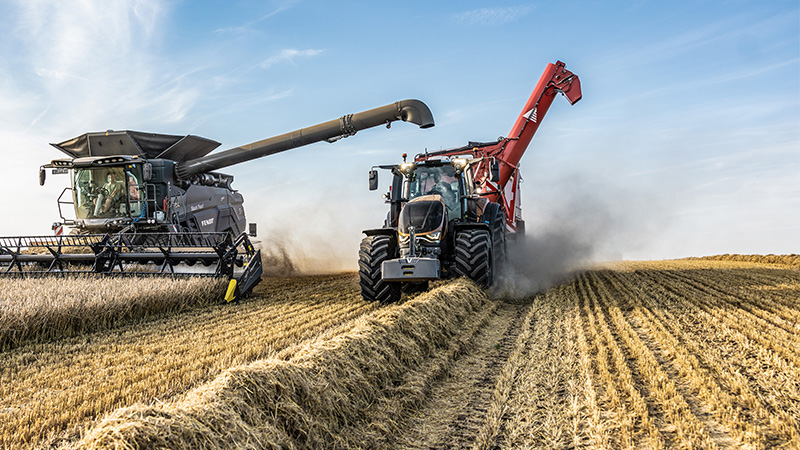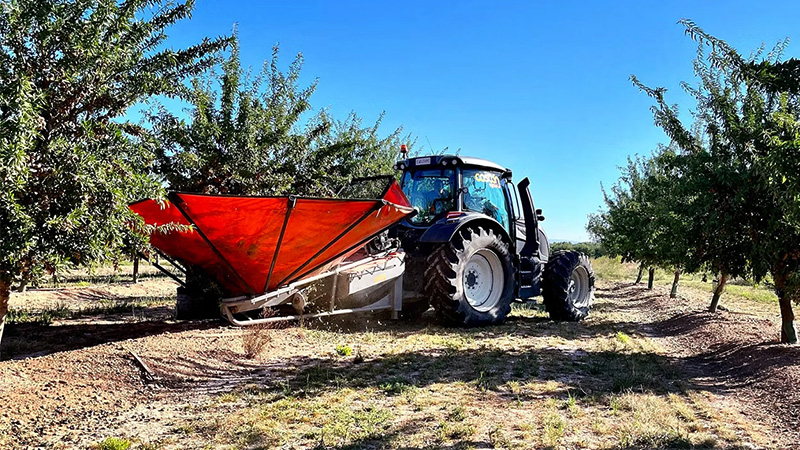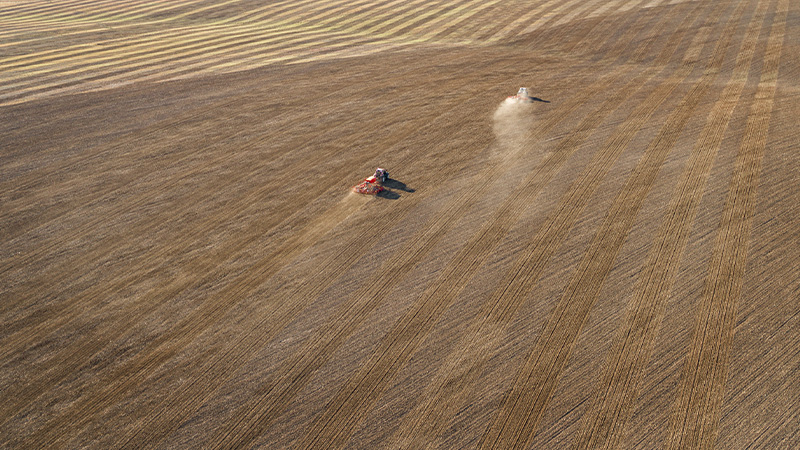Protecting your soil is protecting your yield. That’s a principle every farmer knows well. But one of the more subtle threats to soil health - soil smearing - often goes unnoticed until it’s too late. In this blog, we’ll explore what soil smearing is, how it affects your fields, and most importantly, how you can avoid it.
What is Soil Smearing and Soil Shearing, and How Does it Differ from Soil Compaction?
Soil compaction is a common issue where the weight of machinery driving on the soil compresses the soil particles, reducing porosity and thus drainage and aeration. This can happen even when the soil is dry. Read more about general soil compaction in our blog 'How farmers can avoid soil compaction’. Soil smearing occurs when wet soil is compressed and smeared by machinery, especially when turning or when wheels slip. It involves the realignment of soil particles to form a thin parallel layer. This closes the soil’s natural pores, reducing aeration and water infiltration. Soil shearing is a related problem arising from spinning or slipping wheels, where the soil is squashed together, also reducing porosity and drainage. The result? Poor root development, reduced microbial activity, and ultimately, lower yields.
Smearing is especially common on headlands, where repeated turning and inconsistent wheel paths compact the soil. It’s also exacerbated by wheel slippage, particularly in wet conditions.
Why It Matters
Soil smearing can have long-term consequences for your fields, farm, yield, and ultimately your profitability:
- Reduced water infiltration leads to waterlogging or drought stress.
- Poor root penetration limits nutrient uptake.
- Lower biological activity in the soil microbiome affects soil fertility.
- Yield losses of up to 55% have been reported in severely compacted or smeared soils.
How Farmers Can Avoid Soil Smearing to Improve Soil Condition and Increase Yields
1. Minimise Wheel Slippage with Valtra ASR
Valtra’s Automatic Slip Regulator (ASR) is a game-changer and a market-leader. It uses radar and forward ground speed to automatically adjust engine power and to reduce wheel slip, especially in challenging conditions. Less slippage means less soil disturbance and better traction, which translates to healthier soil, improved fuel efficiency, and less tyre wear. Valtra’s ASR has 5 preset levels to adjust the amount of slippage. For example, at level 1, if wheel slippage increases above 10%, ASR will automatically adjust the transmission and engine to lower the slippage. Being a transmission-based system, it can be used with many different implements, including trailed and mounted implements and even when snow ploughing.
2. Minimise Tractor Wheel Slippage with the Correct Tyre Pressures
Adjusting your tractor’s tyre pressures by just 0.35 bar (e.g. from 1.25 bar to 1 bar) can reduce wheel slip by 15-30%. One study by the AGCO Agronomy Team found that working with the correct tyre pressure also reduces soil compaction depth by 17%, as well as improves field efficiency by 1.8%, and improves on-field fuel efficiency by 7%. The Central Tyre Inflation System by Valtra can easily adjust tyre pressures from within the cab using the SmartTouch interface, ensuring you're working efficiently while protecting your soil.
Learn more about the agrinomical benefits of using the Valtra Central Tyre Inflation System in this video featuring AGCO Agronomist Jens Christian Jensen
3. More Consistent Turning with Valtra Auto U-Pilot and SmartTurn
Headlands are hotspots for smearing. Valtra’s SmartTurn system automates headland turns with precision, reducing unnecessary turning and ensuring consistent turning patterns.
With Valtra Auto U-Pilot, you can automate headland management for consistency, handling up to 25 actions. This system eliminates human errors, ensuring the tractor lifts and lowers implements accurately at the headland line. For example, when drilling, it's best to drill the field's interior first and the headlands last to avoid smearing and compaction, which can reduce yield. Valtra Guide precisely identifies the headland position, preventing errors in lifting or lowering the drill. This avoids gaps in the crop and saves time, fuel, and inputs by eliminating the need for a second round of drilling. Valtra Auto U-Pilot with SmartTurn offers a fully automatic tractor-implement combination, with the driver only supervising and optimising. This not only saves time and fuel but also protects your soil structure.
Learn more about Valtra SmartTurn, including all the turning patterns available in this exclusive video:
4. Avoid Working Wet Soils
It might be tempting to get into the field early, but working wet soils is one of the fastest ways to cause smearing. Wait for drier conditions when the soil is more resilient to pressure.
5. Reduce Passes with Precision Farming
Valtra's smart farming tools, like Valtra Guide and Wayline Assistant, improve driving accuracy and allow the farmer to consistently use the same waylines from one operation to the next. This reduces the amount of soil driven over in the season, thus helping to reduce soil compaction. Similarly, Section Control with Multiboom allows you to apply seed, fertiliser, and crop protection products in a single pass. Fewer passes mean less soil disturbance, lower fuel use, and better soil health.
Wayline Assistant is one of the best additional features available for Valtra Guide. Watch the video to see the full time-saving and ease-of-use benefits:
Long-Term Farm Benefits of Reduced Soil Smearing
By avoiding soil smearing, you’re not just protecting this season’s crop—you’re investing in the long-term health of your land. Healthier soil means: Higher yields
- Better water management
- Improved soil microbiome diversity
- Lower input costs
Investing in the Right Solutions to Protect Your Farm's Soil
Soil smearing might be subtle, but its impact is significant. With the right practices and the help of Valtra’s innovations, like ASR, CTIS, and smart farming technologies like SmartTurn, you can protect your soil, boost your yields, and farm more sustainably.
Want to learn more about how Valtra can help you protect your soil? Contact your local Valtra Dealer or explore our smart farming solutions.



